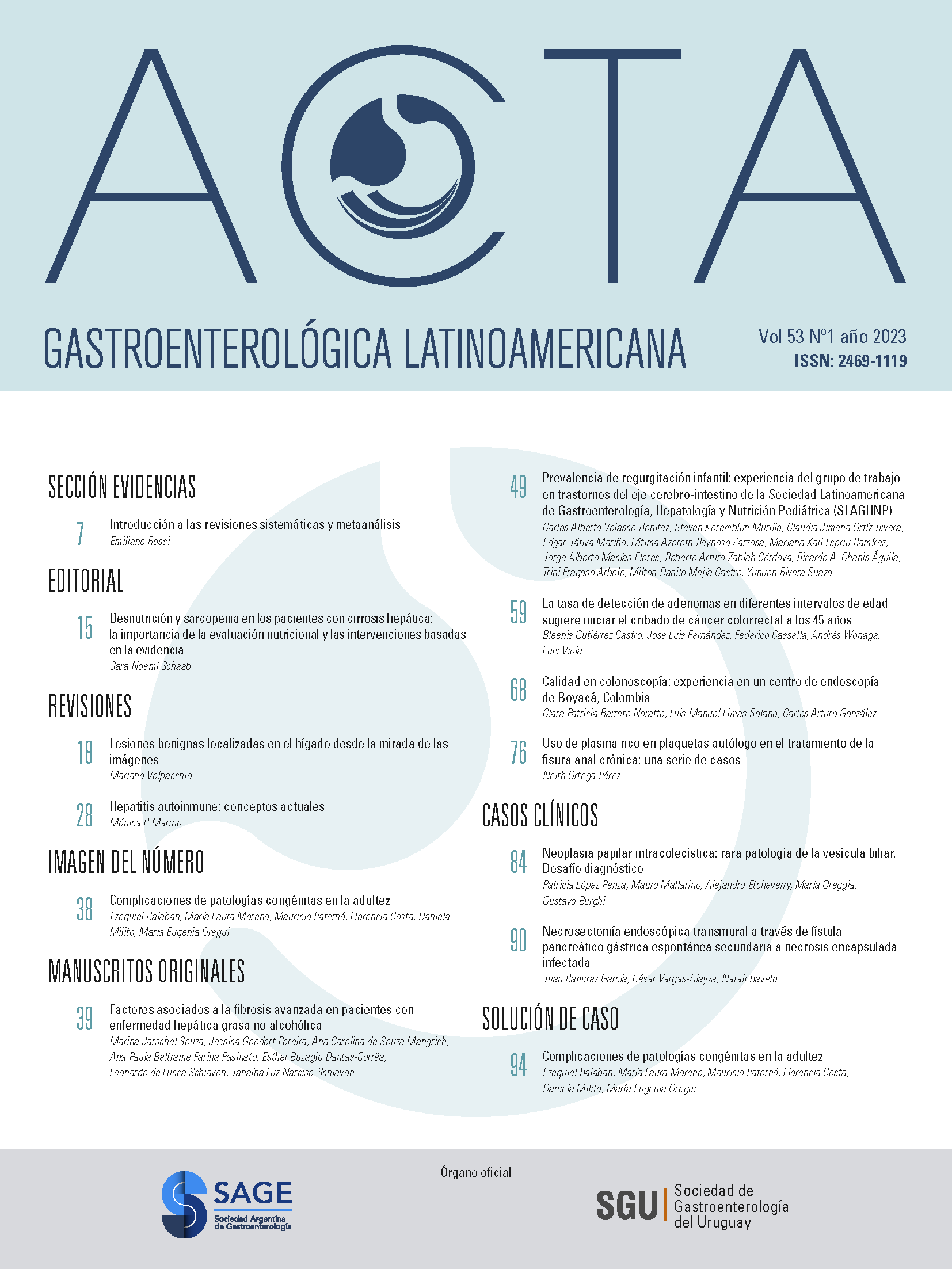Malnutrition and Sarcopenia in Patients with Liver Cirrhosis: the Importance of Nutritional Assessment and Evidence-Based Interventions
DOI:
https://doi.org/10.52787/agl.v53i1.299Keywords:
Malnutrition , sarcopenia , liver cirrhosisAbstract
Malnutrition and sarcopenia are frequently present in patients with liver cirrhosis. The prevalence is estimated to be between 23% and 60%, which may be even higher in patients on the liver transplant waiting list. Both conditions are associated with a higher rate of complications and are independent predictors of lower survival.1
The etiology of malnutrition/sarcopenia in liver cirrhosis is multifactorial and results from a combination of alterations in intake and nutrient digestion, absorption and metabolism. Poor dietary intake may result from gastrointestinal symptoms, anorexia, dysgeusia, prolonged fasting and inadequate dietary prescriptions. Malabsorption may be secondary to portal hypertension or cholestatic disease. However, impaired macronutrient metabolism is a central mechanism that contributes significantly to malnutrition, as peripheral insulin resistance and reduced hepatic glycogen stores promote early gluconeogenesis, leading to protein and lipid catabolism. This may occur in the face of a short overnight fast and resemble the catabolic state of healthy subjects undergoing 2-3 days of starvation.2
References
-1. Bunchorntavakul C, Reddy KR. Review article: malnutrition/sarcopenia and frailty in patients with cirrhosis. Aliment Pharmacol Ther. 2020;51(1):64-77.
-2. Juakiem W, Torres DM, Harrison SA. Nutrition in cirrhosis and chronic liver disease. Clin Liver Dis. 2014 Feb;18(1):179-90.
-3. Veissetes D, González A. Evaluación nutricional de pacientes con cirrosis hepática hospitalizados y el impacto en el pronóstico de la enfermedad: estudio de corte transversal. Acta Gastroenterológica Latinoamericana. 2020;52(3):367-377.
-4. Gutiérrez MC, Curia A, Rey E, Sordá JA, Daruich J, González Ballerga E. Prevalencia de malnutrición en pacientes con cirrosis hepática: estudio observacional. Acta Gastroenterológica Latinoamericana. 2020;52(4),464-475.
-5. Merli M, Berzigotti A, Zelber-Sagi S, Dasarathy S, Montagnese S, Genton L, Plauth M, Parés A. EASL Clinical Practice Guidelines on nutrition in chronic liver disease. Journal of Hepatology. 2019;70(1):172-93.
-6. Cruz-Jentoft AJ, Bahat G, Bauer J, Boirie Y, Bruyère O, Cederholm T, Cooper C, Landi F, Rolland Y, Sayer AA, Schneider SM, Sieber CC, Topinkova E, Vandewoude M, Visser M, Zamboni M; Writing Group for the European Working Group on Sarcopenia in Older People 2 (EWGSOP2), and the Extended Group for EWGSOP2. Sarcopenia: revised European consensus on definition and diagnosis. Age Ageing. 2019 Jan 1;48(1):16-31.
-7. Detsky AS, McLaughlin JR, Baker JP, Johnston N, Whittaker S, Mendelson RA, et al. What is subjective global assessment of nutritional status? J Parenter Enteral Nutr. 1987;11:8-13.
-8. Topan MM, Sporea I, Dănilă M, Popescu A, Ghiuchici AM, Lupușoru R, et al. Comparison of Different Nutritional Assessment Tools in Detecting Malnutrition and Sarcopenia among Cirrhotic Patients. Diagnostics. 2022;12(4):893.
-9. Bischoff SC, Bernal W, Dasarathy S, Merli M, Plank LD, Schütz T, et al. ESPEN practical guideline: Clinical nutrition in liver disease. Clinical Nutrition. 2020;39(12):3533-62.
Published
How to Cite
Issue
Section
License
Copyright (c) 2023 Sara Noemi Schaab

This work is licensed under a Creative Commons Attribution-NonCommercial-ShareAlike 4.0 International License.













